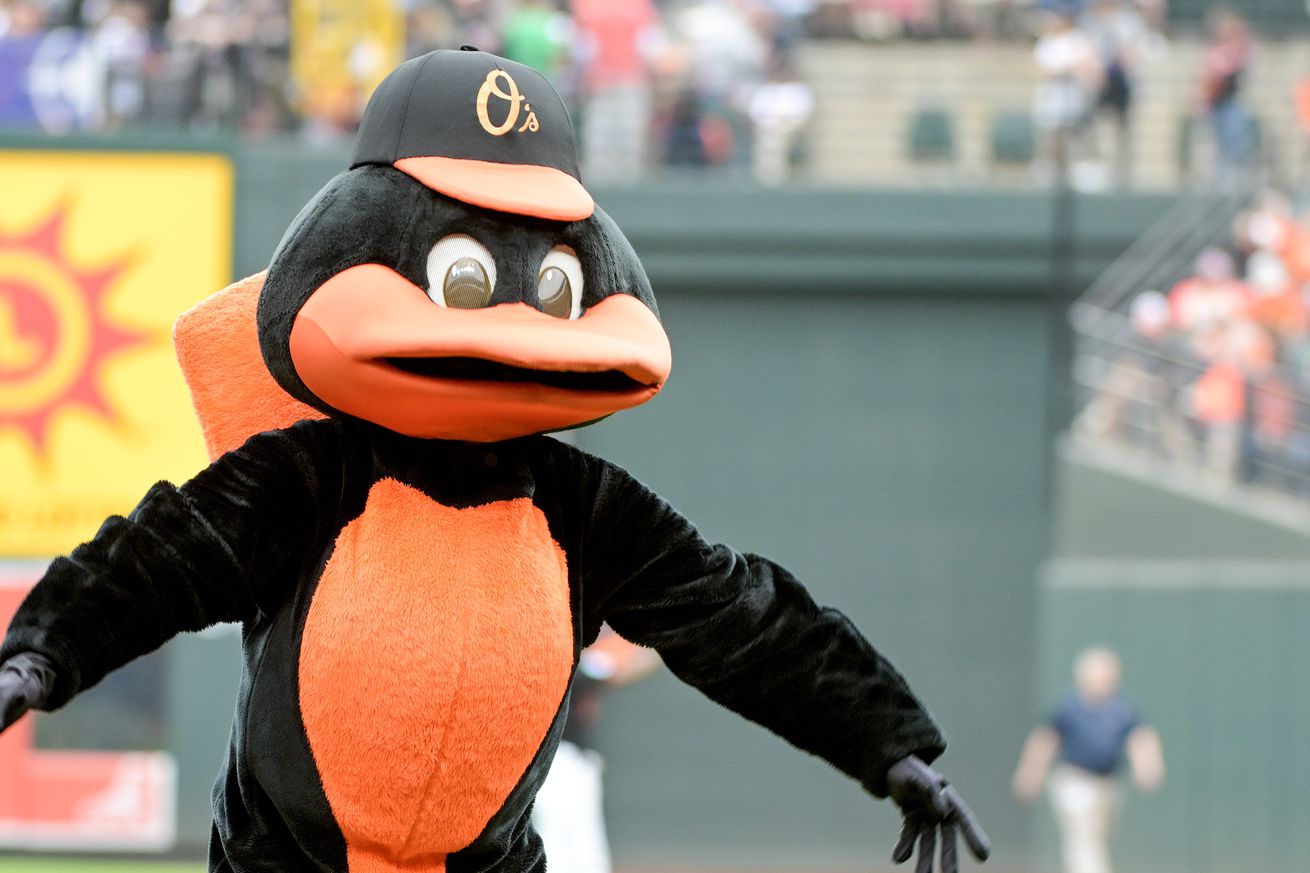
The 19-year-old switch-hitting Estrada excelled for Delmarva this season.
When the international amateur signing period opened up in January two years ago, the Orioles handed out what was then a team-record $1.7 million signing bonus to outfielder Braylin Tavera. At the same time, the team gave out bonuses of at least $100,000 to 14 other players in hopes of having more chances of one of them turning into something.
Going into this season, there wasn’t much to separate Venezuelan infielder Aron Estrada from any of those other guys. After Estrada’s 2024 campaign, where he had a strong set of results in his first taste of a full-season affiliate at age 19, the switch-hitter might well be the standout player from that Orioles signing class, at least for now.
This was not a good season for the Delmarva Shorebirds, the Low-A affiliate of the Orioles where Estrada spent most of the season. They were one of the worst teams offensively in a league that was marked by struggles by its mostly-young hitters. Overall, Carolina League batters had this batting line: .229/.325/.336. That’s rough, and Delmarva’s batters were worse in all three of the triple slash categories.
Although Estrada was even younger than much of the competition in this lowest-level league, that did not prove much of a barrier to accumulating some fantastic batting numbers. In 91 games for the Shorebirds, Estrada’s batting line was, considering his age and competition level, simply fantastic: .296/.361/.434. He hit eight home runs and stole 31 bases all while keeping a low strikeout rate of about 16.8%.
This is impressive stuff from Estrada. There’s a modern stat that’s called Weighted Runs Created (wRC+) that takes a player’s performance and adjusts it to his league environment and the parks he played in. 100 is average and higher is better. It works for minor leaguers as well as major leaguers.
Estrada checked in at a 133 wRC+, so he was 33% beyond the average Carolina League batter’s performance. Obviously, Low-A pitchers are a much easier task to conquer than MLB-level ones, but that 133 wRC+ would have been second-best on the Orioles team, behind only Gunnar Henderson. Estrada was even better compared to his league peers than Anthony Santander, Jordan Westburg, and everybody else were for the Orioles.
The performance at Delmarva was enough to get Estrada a promotion to the High-A affiliate at Aberdeen for the final month-plus of the season. At that level, Estrada’s performance was a step back, with an OPS of .678 in 26 games played there. Considering that this was a 19-year-old going up against a lot of players 22 and older, that’s something where you can say “he held his own.”
That’s a phrase commonly deployed among prospect writers for a player who was not clearly outclassed even if he didn’t stand out. It’s a good first step and you can hope for movement in a positive direction. We would all be a lot happier if Jackson Holliday had met the “held his own” level in MLB this year. (Actually, if you take out his April games, he did.)
Up to this point, this modest step forward has not resulted in a ton of prospect stock for Estrada. He checks in at #29 on the most recent update to MLB Pipeline’s ranking of Orioles, but isn’t on Baseball America’s top 30 or a 41-deep list on FanGraphs. It’s going to take more than Delmarva numbers to get Estrada going higher up these lists.
One reason that Estrada is probably always going to have to overcome some skepticism as he climbs the minor league ladder is that he’s only listed at 5’8”, which probably means he’s even shorter than that. Currently listed at 142 lbs, he’ll have to grow into some strength if he’s going to have much chance at higher levels as well.
This could have already started happening to some extent, as prospect height/weight numbers take some time to adjust to reality. Keeping track of that kind of thing for public databases is not a high priority for anyone. For an extreme example: Two years ago, Félix Bautista was listed at 6’5” 220 lbs. and now he’s listed at 6’8” and 285 lbs. The reason for this is not that Bautista grew three inches or gained 65 pounds from ages 27-29. It’s just that once he became a player to know, they got around to fixing out-of-date numbers.
Since getting into the pro ranks, Estrada has played second base more than any other position, while also getting into a decent amount of games at shortstop, with some left field and center field time mixed in as well. A pessimistic view would be that he’s not good enough to stick at one position.
More generously, this level of athletic ability giving him positional versatility could give Estrada a possible future as a super-utility kind of player. If your backup infielder can hit from both sides of the plate, steal a few bases, and also play in the outfield in a pinch, that’s not too bad. There’s a lot going into that “if” to get Estrada from where he was in the 2024 season up to the MLB level. If he can keep advancing at roughly a level per season, we’d be seeing him in the Orioles roster mix in late 2027 or early 2028. Or they could trade him before then, if some other team takes a liking to his talent.
For 2025, Estrada is likely to start back up with the Aberdeen IronBirds, where he’ll be playing in the infield alongside of 2024 draft picks Ethan Anderson and Griff O’Ferrall, as well as another signee from that 2022 Orioles international class, Leandro Arias. The scouting consensus has Arias as the better prospect, but there’s no question who had the better 2024 season.
Tomorrow: Alex Pham